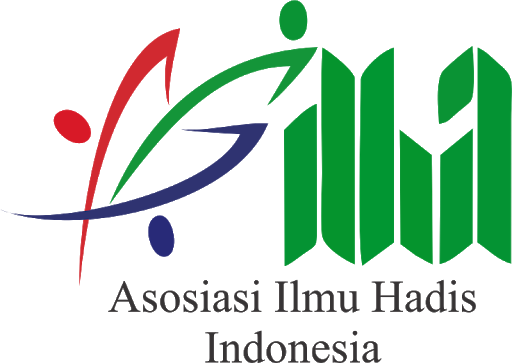Living Hadith: Study of Transmission and Transformation of the Practice of Reading the Hadith of the Prophet Muhammad saw
Living Hadis: Studi Transmisi dan Transformasi Praktik Pembacaan Hadis Nabi Muhammad saw
DOI:
https://doi.org/10.14421/livinghadis.2023.4611Abstract
Not only as a second guide after the Qur'an, some Muslims treat the hadith of Ṣaḥīḥ al-Bukhāri in a unique and unusual manner; read in turns without explanation like the practice of reciting the Koran. In contrast to reading the Koran, which has religious values (worship, intercession, and others), there are no hadiths or the Koran that encourage the reading of hadiths. Using a social history perspective, the paper attempts to explore how the early emergence and development of the practice of reading hadith Ṣaḥīḥ al-Bukhāri in the Islamic world and how hadith (text) exists in the social practices of Muslims. As a practice that spatializes the sound of hadith texts (living hadis), this paper finds four forms of classification of transmission-transformation of hadith reading practices: 1). Hadith reading in the tradition of hadith transmission, has emerged from the beginning as a method of teaching and spreading hadith. 2). The reading of hadiths in healing practices in the 3H century, was carried out by Ahmad bin Mashur al-Ramadi. 3). In the 7H/13M century, reading appeared and the use of Ṣaḥīḥ al-Bukhāri as a protective practice in the social space, as an intermediary for the personification of the Prophet to God in answering the problems faced by Muslims. 4). The reading and use of Ṣaḥīḥ al-Bukhāri developed into a routine annual tradition in the 8H/14AD centuries; Rajab; Sha'ban; Ramadan; dry months. Done with big celebrations to get goodness, blessings, piety, reward, intercession of the Prophet, revive the Prophet's Sunnah, preserve ancestral traditions, hospitality, and efficacious intermediaries of prayer.
 Abstract viewed: 589 times
|
Abstract viewed: 589 times
|
 pdf downloaded = 523 times
pdf downloaded = 523 times
References
Abdul Qadir Umar Mauladdawilah. (2013). 17 Habaib Berpengaruh di Indonesia. Malang: Pustaka Basma.
Abi Jamrah, A. (t.t.). Bahjat al-Nufūs wa Taḥlīhā bi Ma‘rifat Mā Lahā wa Mā ‘Alaihā (3 ed., Vol. 1). Bairut: Dar al-Jail.
al-Daraquthni, A. bin U. (1985). Al-‘Ilal al-Wāridat fi al-Aḥādīs al-Nabawīyat (Vol. 6). Riyad: Dar al-Thayyibat.
al-Haytami, A. S. bin H. (t.t.). Al-Fatāwa al-Ḥadīsiyyat. Bairut: Dar al-Ma’rifat.
al-Kattani, Y. (t.t.). Madrasat al-Imām al-Bukhāri fi al-Maghrib. Bairut: Dar Lisan al-Arab.
al-Muzhahiri, T. al-Nadwi. (1994). al-Imam al-Bukhari: Imam al-Huffazh wa al-Muhadditsin. Damaskus: Dar al-Qalam.
al-Nawawi, Y. bin S. (1996). Al-Tibyān fi Adāb Ḥamalat al-Qur‘ān. Bairut: Dar Ibn Hazm.
al-Qasthalani, A. bin M. (1996). Irsyād al-Sārī Lisyarḥ Ṣaḥīḥ al-Bukhārī (Vol. 1). Bairut: Dar al-Kutub al-Ilmiyyah.
al-Shafadi, K. bin A. (2000). Al-Wāfī bi al-Wafayāt (Vol. 4). Bairut: Dar Ihya’ al-Turath al-Arabi.
al-Subki, A. W. (1964). Tabaqāt al-Syāfi‘īyyat al-Kubra (Vol. 9). Kairo: Faisal Issa al-Babi al-Halabi.
al-Subki, A. W. (1964). Tabaqāt al-Syāfi‘īyyat al-Kubra (Vol. 2). Kairo: Faisal Issa al-Babi al-Halabi.
al-’Ubaidi, A. bin A. (1997). Al-Sulūk Lima‘rifat Duwal al-Mulūk (Vol. 4). Bairut: Dar al-Kutub al-Ilmiyyah.
al-’Ubaidi, A. bin A. (1997). Al-Sulūk Lima‘rifat Duwal al-Mulūk (Vol. 2). Bairut: Dar al-Kutub al-Ilmiyyah.
al-Wasyli, A. Q. (t.t.). ‘Ilm al-Ḥadīs fi al-Yaman wa Ināyat al-Yamāniyyīn bi Ṣaḥīḥ al-Bukhārī wa Tarājim Rijāl Isnādih.
al-Khatib al-Baghdadi, A. (1996). Syaraf Aṣḥāb al-Ḥadīṡ wa Naṣīḥat Ahl al-Ḥadīṡ. Kairo: Maktabah Ibn Taimiyah.
al-Khatib al-Baghdadi, A. (2001). Al-Tārīkh al-Baghdādī (Vol. 6). Beirut: Dar al-Gharib al-Islami.
al-Ya’qubi, M. A. H. (2019). Al-Madkhal ila Ṣaḥīḥ al-Bukhārī. London: Dar Tauqi’at.
Azami, M. M. (2018). Hadis Nabawi Dan Sejarah Kodifikasinya (A. M. Yaqub, Penerj.). Jakarta: Pustaka Firdaus.
Brown, J. (2007). The Canonization of al-Bukhari and Muslim: The Formation and Function of the Sunni Hadith Canon. Leiden: Koninklijke Brill NV.
Dols, M. W. (2019). The Black Death in the Middle East. Princeton University Press.
Hasan, M. I. (2019). Tradisi Rouhah Shahih Al-Bukhari Di Pon. Pes. Mambaus Sholihin Gresik (studi Historis Fenomenologis) (Masters, Universitas Islam Negeri Sunan Kalijaga). Universitas Islam Negeri Sunan Kalijaga, Yogyakarta.
Hunwick, J. O. (1999). Timbuktu and the Songhay Empire Al-Sa’di’s Ta’rikh Al-Sudan down to 1613 and Other Contemporary Documents.
Ideham, M. (2005). Suriansyah. Et. Al. Urang Banjar dan Kebudayaannya.
Jamalie, Z. (2016). “Maarak Kitab Bukhari” Tradition in Banjar Community. https://doi.org/10.18860/el.v18i2.3649
Levering, M. (1989). Rethinking Scripture: Essays from a Comparative Perspective. State University of New York Press.
Mochamad Ismail Hasan, N. 1620510030. (2019). Tradisi Rouhah Shahih Al-Bukhari Di Pon. Pes. Mambaus Sholihin Gresik (studi Historis Fenomenologis) (Masters, Universitas Islam Negeri Sunan Kalijaga). Universitas Islam Negeri Sunan Kalijaga.
Muhlis, A., & Norkholis, N. (2016). Analisis Tindakan Sosial Max Weber dalam Tradisi Pembacaan Kitab Mukhtashar Al-bukhari (Studi Living Hadis). Jurnal Living Hadis, 1, 242–258.
Mustamid, K. (2009). Mujahhadah Bukhoren Di Kecamatan Tempuran Dan Kecamatan Salaman, Kabupaten Magelang, Provinsi Jawa Tengah (Skripsi, UIN Sunan Kalijaga). UIN Sunan Kalijaga.
Qadri, A. (2022). Tradisi Pembacaan Kitab Ṣaḥīḥ al-Bukhārī Di Bulan Rajab (Studi Living Hadis Di Pondok Pesantren Darunna’im, Pontianak Kalimantan Barat) (Masters, UIN Sunan Kalijaga). UIN Sunan Kalijaga, Yogyakarta.
Qudsy, S. Z., & Dewi, S. K. (2018). Living Hadis: Praktik, Resepsi, Teks, dan Transmisi (No.). Yogyakarta: QMedia & Ilmu Hadis Press.
Rabiatun, A. (2019). Resepsi Estetis Terhadap Hadis Nabi (kajian Atas Lukisan Kaligrafi Pasir Faizan Zuhairi) (Skripsi, Universitas Islam Negeri Sunan Kalijaga). Universitas Islam Negeri Sunan Kalijaga, Yogyakarta.
Rafiq, A. (2021). The Living Qur’an: Its Text and Practice in the Function of the Scripture. Jurnal Studi Ilmu-Ilmu Al-Qur’an Dan Hadis, 22, 469–484.
Ramli, F. Z. binti M., Majid, L. binti A., Nazri, M. A. bin, & Mohd.Nordin, H. binti. (2015). Faktor Dorongan Al-Sama‘ dan Al-Qira’ah Hadis-Hadis Sahih Al-Bukhari dalam Pengajian Talaqqi Bersanad (TB) di Malaysia [Factors Encouraging Al-Sama ‘and Al-Qira’ah Sahih Al-Bukhari Hadiths in The Study of Talaqqi Bersanad (Tb) in Malaysia]. Jurnal Islam Dan Masyarakat Kontemporari, 11, 57–74.
Rasyid Ridha, M. (1904). Majallat al-Manār (Vol. 17). Mesir.
Sa’diyah, H. (2013). Majelis Bukhoren Di Kasultanan Ngayogyakarta Hadiningrat (studi Living Hadis) (Skripsi, UIN Sunan Kalijaga). UIN Sunan Kalijaga.
Setiawan, A. (2020). Tradisi Selapanan Kitab Shahih Bukhari (studi Kasus Alumni Santri Langitan Tuban Di Kabupaten Jepara) (Masters, UIN SUNAN KALIJAGA YOGYAKARTA). UIN SUNAN KALIJAGA YOGYAKARTA.
Subhan, M. (2016). Tradisi Mengarak Kitab Shahîh Al-Bukhârî Pada Ritual Tolak Bala Di Kecamatan Daha Utara, Hulu Sungai Selatan, Kalimantan Selatan (studi Living Hadis) (Skripsi). UIN Antasari, Banjarmasin.
Suryadilaga, M. A. (2009). Model-Model Living Hadis Pondok Pesantren Krapyak Yogyakarta. Al Qalam, 26, 367–383.
Wajdi, N. A. (2019). Tradisi Ziarah Kubur: Studi Kasus Ziarah Makam Habib Ali Bin Abdurrahman Al-Habsyi Kwitang, Jakarta Pusat Tahun 2014–2018. Fakultas Adab dan Humaniora UIN Syarif Hidayatullah Jakarta.
Downloads
Published
Issue
Section
License
Copyright (c) 2024 Abdul Qadri

This work is licensed under a Creative Commons Attribution-ShareAlike 4.0 International License.
- Authors who publish with this journal agree to the following terms:
- Authors retain copyright and grant the journal right of first publication with the work simultaneously licensed under a Creative Commons Attribution License that allows others to share the work with an acknowledgement of the work's authorship and initial publication in this journal.
- Authors are able to enter into separate, additional contractual arrangements for the non-exclusive distribution of the journal's published version of the work (e.g., post it to an institutional repository or publish it in a book), with an acknowledgement of its initial publication in this journal.
- Authors are permitted and encouraged to post their work online (e.g., in institutional repositories or on their website) prior to and during the submission process, as it can lead to productive exchanges, as well as earlier and greater citation of published work.
















